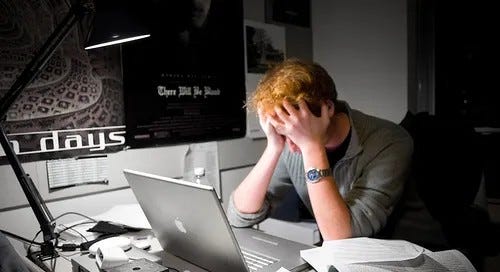Going Through: Surving the Swamplands of the Artistic Journey
We never achieve final certainty, never see the whole picture, never arrive at the sun-lit meadow.
Truth is always on the side of the more difficult. – Friedrich Nietzche
Not too far from the small town where I grew up in northwest Louisiana, there is a long stretch of swamplands called, graphically enough, “Black Lake Swamp.”
There is a paved highway with a long bridge that runs right through the heart of the vast wetlands. And if you ever saw the movie Steel Magnolias and remember the scene at the end where Sally Fields takes a long drive at sunset after her daughter’s (Julia Roberts) death, then you’ve seen this exact place.
It is interesting to drive through such muck on a paved road, but no one I know would like to live there.
Re-Imagining Ourselves
The artistic journey is a labyrinth that leads only into a conundrum at best. There are no comforting explanations.
The way is often unclear.
And the point is that we have no choice but to be pulled into these swamplands, and repeatedly. We would like to believe that if we live with high moral purpose, we will be exempt.
But remember Job and the message of Ecclesiastes. There is no moral contract which we are able to strike with the universe.
The great rhythms of nature, of time and tide, of fate and destiny, and our own psyche, move their powerful ways quite outside our will.
And while it might be terrible to have to wade alone into the quagmire, that is where we as artists might find ourselves often, so it is no time to try to scamper back or freeze mid-transit. We are out there in the muck whether we wish it or not.
We were put there. As Pascal wrote, “It is not a matter of deciding whether or not to set sail; we are already launched.”
So, we are forced into a difficult choice. If we move forward and out into the creative world toward the “side of the more difficult,” as our soul insists, we will be flooded with anxiety. If we do not move forward, we will suffer the depression, the pressing down of the soul’s purpose.
Hardly a pretty choice. But it is a choice that each artist makes, consciously or not, virtually every moment.
In such a difficult choice, we must choose anxiety, for anxiety at least is a path of potential growth; depression is a stagnation and defeat of life.
Going Through
There is an incredible sweetness that comes to those who have “gone through,” though you could not begin to imagine such a thing while enduring the torments of Hell.
Thomas Yeats, aging and in poor health, surveys the turbulent course of his artistic life and in 1929 concludes:
We must laugh and we must sing,
We are blest by everything,
Everything we look upon is blest.
The above lines are from “A Dialogue of Self and Soul,” in Selected Poems and Two Plays. They come at the end of a long text which acknowledges the defeats, disappointments and losses of Yeats’s life.
No shallow optimism there, only the deepened wisdom of a person who spent much of his life in the swamplands, and from that material forged his life and art.
Like us all, Yeats would have preferred certainties but found only fragments, disappointments, but most of all the need to find his own truth.
Like us all, he would have preferred to be given the big picture clearly, coherently and quickly. Like us all, he had to painfully piece things together over decades.
The Blur and Blot of the Artistic Journey
We never achieve final certainty, never see the whole picture, never arrive at the sun-lit meadow. We see through the glass darkly, see bits and pieces only.
And so, for all of its transcendent mystery and beauty, the life of an artist is also a blur and a blot.
We never see it clearly. We never get it right; we never get it fixed; we never get it finished.
Only now and then are there moments of purpose, of clarity, of meaning. For surely, we are not gods.






You have that list of fake stuff about trump on hand? “The fine people”, “Russia hoax” etc?